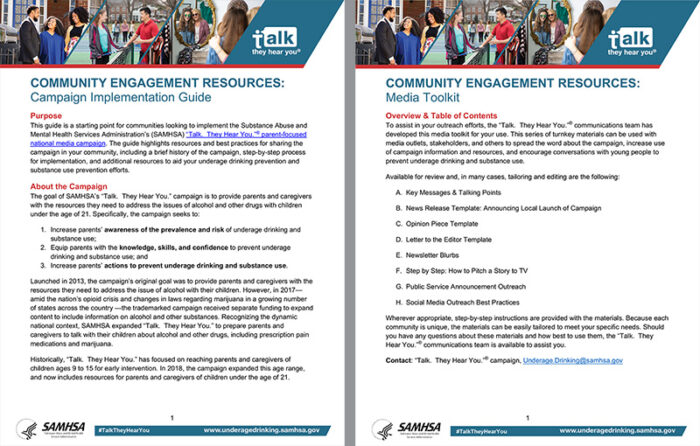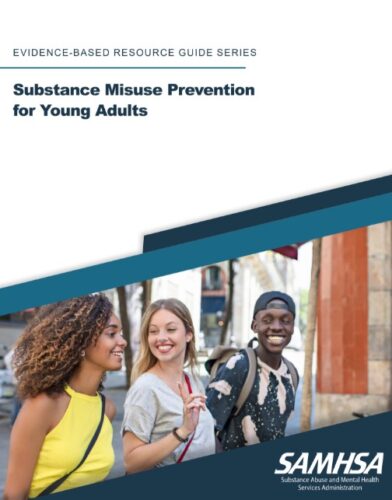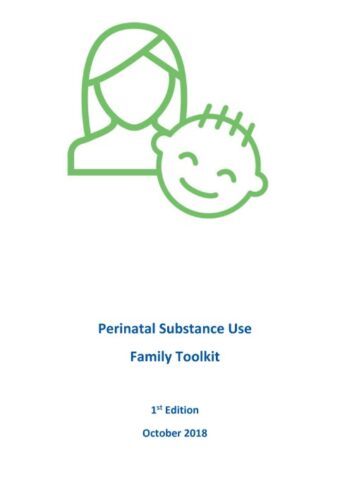Xylazine Harm Reduction and Wound Care
A handout with information about Xylazine and wound care for harm reduction.
Xylazine 101: Harm Reduction and Wound Care
Xylazine (also known as tranq) is an animal tranquilizer that is becoming a common cut in street drugs in North America. Usually found mixed with fentanyl or heroin, it causes very heavy sedation and can also cause complicated injection-related wounds. Some people have reported losing consciousness or blacking out for 4-6 hours at a time. People
also report dry mouth, dizziness, weakness, nausea, trouble breathing, high blood sugar (hyperglycemia), slow heart rate, and memory loss. Since it is a relatively new addition to the
drug supply, harm reductionists and people who use drugs are still learning about it and its short- and long-term effects.
Xylazine + Overdose
A xylazine overdose can look similar to an overdose from other sedating drugs (opioids, benzos, alcohol). Respiratory depression, or slowed or stopped breathing, is extremely
dangerous — just a few minutes of little-to-no oxygen can cause permanent brain damage. Since xylazine is not an opioid, naloxone will not reverse its effects. In most parts of the US, however, xylazine appears
alongside fentanyl. If someone is experiencing an overdose you should still:
1. Administer one dose of naloxone and focus on rescue breathing.
2. If the person doesn’t start breathing on their own in 3-5 minutes, administer a second dose of naloxone.
3. Continue rescue breathing until the person is breathing again.
A person who is experiencing complications from xylazine use may not respond to naloxone in the ways you are used to. They may not come to right away and will often remain unconscious, or in a very heavy nod.
This is because even if the naloxone is working on the opioids in their system, the xylazine might still be keeping them sedated. If someone is breathing, do not administer more naloxone. Too much naloxone may cause someone to go into precipitated withdrawal, which could induce vomiting. If
someone is throwing up while unconscious it is possible for them to aspirate their vomit, which can be life threatening. To avoid the risk of choking on vomit, place the unconscious, but breathing person in the
rescue or recovery position and keep an eye on them until they regain consciousness. If
their breathing slows or stops again, continue to administer rescue breaths. If you have a
pulse oximeter, you can use it to monitor their blood oxygen levels and heart rate. Ideally, a blood oxygen level should be between 95-100%, while a healthy heart rate falls between 60-100 BPM. Pulse oximeters can be purchased over the counter at your local pharmacy. Keep in mind that pulse oximeters
can fail to give a reading or give an incorrect reading on people with darker skin complexions or if the individual has nail polish on their nails.
Xylazine Withdrawal
We are still learning about the effects of Xylazine withdrawal. It can be especially difficult to pinpoint these effects because
Xylazine is most often found in conjunction with other drugs. We don’t have medications like buprenorphine or suboxone for Xylazine, but there are other medications that can help
treat the withdrawal side effects, if they become dangerous or unmanageable for you.
Xylazine withdrawal can sometimes cause very high blood pressure, with accompanying symptoms of confusion, chest pain, and shortness of breath. In extreme cases, you
might want to visit a hospital, where they might treat your symptoms with clonidine, a drug that will help balance your blood pressure. Less severe symptoms include anxiety, restlessness, vomiting, heart palpitations, chills, fatigue, and irritability, which can usually be managed at home.
Harm Reduction Tips
Xylazine test strips are now available. Xylazine is almost exclusively seen in drugs that are sold as fentanyl or heroin. If these are your drugs of choice, you might consider testing
your bag.
If your sample tests positive for xylazine and you still choose to use it, start with a smaller dose than normal — the sedative effects can be very overpowering! Consider smoking, boofing, or snorting your drugs — preliminary research shows that Xylazine-associated wounds might be less likely to form via these routes of administration.
Make sure that the people you are using with are prepared to give rescue breaths and know not to give you too much naloxone. And, as always, try not to use alone.
Wound Care
One of the least-understood complications of xylazine are the large, painful wounds that it can cause. Particularly mysterious, is the fact that these wounds sometimes appear far away from your injection site. These wounds may start out looking like burns, scrapes,
or pimples. Commonly found on your arms and legs, they quickly get progressively worse, leading to dying (necrotic) skin and tissue and deep, weeping wounds. They might look different on darker skin but still have the same deep pain when they start to develop. It is important to know that xylazine-related wounds should be treated differently than abscesses or wounds from missing or muscling your shots. Learning how to recognize them is an important part of treating them appropriately.
Progression and Challenges
Initially resembling pressure ulcers or blisters, these very painful wounds usually open up and expand to open lesions, which can be very large. The development of the wounds
varies. They may last weeks, months, or even years, appearing as chronic dry dark scabs that fall off and reopen.
Healing with Care
Be sure to wash your hands with soap and water before treating or touching your wounds. Xylazine wounds should be: Cleaned with soap and water. For people without housing or access to clean running water, it can be tough to manage these large, draining wounds. If you don’t have access to clean tap water, sterile saline is also an option. Using alcohol, BZK wipes, or peroxide is NOT suggested for these wounds. Use a wet piece of gauze to gently wipe the wound and the surrounding skin to clean off any dried wound drainage and dead skin that is easily removed.
Moisturized
You can use A&D ointment or even a thin layer of vaseline to keep these wounds moist but not wet. This will help dead skin fall off and allow healthy skin to regrow, and keep your bandages from sticking to the wound.
Covered with clean bandages. The best dressing for a Xylazine wound has three parts:
A first layer of a non-sticky bandage, like
Xeroform or Tegaderm. This layer, applied
over a little bit of ointment or vaseline,
protects your wounds from infections and
helps prevent the other dressings from
sticking. Manuka honey (Medihoney) has
been found to be very useful and effective
for its wound healing and antibacterial
properties.
A second, absorptive layer of gauze. This
layer absorbs any excess fluid, promoting a
clean and moist environment that will help
your body heal.
A third, supportive layer of Coban or an ace
bandage. This strong layer secures your
other dressings and minimizes the risk of
infection.
You should change your dressings every 24-48 hours, or when the wound drainage soaks through it. You want your wound to be moist, but not too wet — if you see white, soft skin around your wound, you need to let it dry out a bit. Leave it alone! Be very gentle with your wound. Avoid damaging it or the skin around it. Never apply tape directly to the wound and
avoid over tightening your bandages. Do not apply alcohol or peroxide to these wounds and never inject into our around them. While it can be tempting to pick a scab, the best thing you can do is let your body heal itself without being poked and prodded too much.
Redness, swelling, pus, worsening pain, fever, chills, or blackening skin are signs of infections that may need emergency or professional care. In rare cases, wounds
can extend all the way down to your bone. Since xylazine is relatively new to many parts of the U.S., your medical provider may not be familiar with what it is or how to help you. If you seek medical attention, it is important to let your provider know that xylazine may be involved so that they can research the best way to help you. We know that you might not feel safe or comfortable going to the doctor, but unlike typical injection wounds, these are unlikely to disappear on their own, especially if you are still using drugs that contain Xylazine.
Urgent symptoms include:
• Exposed bone and/or tendon
• Inability to move a joint or decreased range of motion at site of a wound
• Fever
• Unexplained nausea and vomiting (e.g., not explained by opioid withdrawal)
• Warmth over the skin or joint
Help Spread the Word
People who use drugs are the experts on what xylazine feels like and how it impacts your
body. We are still learning about it, so please share your experiences with us so that we can develop a broader understanding about it and its effects. It’s also very important to help stop disinformation and spread education amongst your community.
Remember:
• Xylazine wounds are not contagious
• These wounds can appear away from where you inject
• Not everyone with a xylazine associated wounds will lose a limb
• They don’t all require antibiotics or surgical interventions
And remember: the increasingly unsafe drug supply is a direct result of drug prohibition and the laws that criminalize and surveil people who use drugs. This makes it all the more important to keep each other informed and safe!
Remember – there is no wound fairy. If you’ve passed the point of self- care for a wound, be sure to go see a healthcare provider.
Resources:
Getting off Right (Harm Reduction Coalition): https://harmreduction.org/wp-
content/uploads/2011/12/getting-off-right.pdf
Woundcare Zine (NEXT Distro):
https://issuu.com/nextdistro/docs/zine_wound_care_web_
110118/12
New Hampshire Harm Reduction Coalition:
http://nhhrc.org/skin-care-guide-people-inject-drugs/
Artwork by: Sally, Cody Weinstock, Fish
Special thanks to: Harm Reduction Coalition for assistance with content, Harm Reduction Action Center PWID Advisory Committee, & Ruth Kanatser
Cellulitis
With cellulitis, the bacteria enter the skin. Cellulitis may spread rapidly. Affected skin appears swollen and red and may be hot and tender. Skin impacted by cellulitis often appears “orange like” in toughness and consistency, mimicking that of the skin of an orange. Without treatment with an antibiotic, cellulitis can be life-threatening.
Blood Poisoning
Sepsis occurs when chemicals released in the bloodstream to fight an infection (like staph) trigger inflammation throughout the body. This can cause a cascade of changes that damage multiple organ systems, leading them to fail, sometimes even resulting in death. Symptoms include fever, difficulty breathing, low blood pressure, fast heart rate, and mental confusion. Treatment includes antibiotics and intravenous fluids.
Tetanus
Tetanus is a potentially fatal bacterial infection that affects the nerves. A vaccine can easily prevent the infection, which has no cure. Tetanus causes painful muscle contractions, particularly in the jaw and neck. It can interfere with the ability to breathe, eventually causing death. Treatment focuses on managing complications.
“Cotton Fever”
Symptoms occur soon after injecting:
Chills, fever, shaking, hot flashes, nausea, headaches, difficulty breathing.
Caused by the bacteria that live in used cotton filters, *not* caused by injecting cotton fibers.
Uncomfortable but not usually serious, however you should go to the ER if symptoms last longer than 4 hours.
Staph/Strep/MRSA
Staph can be spread person-to-person and is very contagious. Common symptoms include boils and oozing blisters. In rare cases, staph infections can turn deadly if the bacteria invade deeper into the body or enters the bloodstream resulting in fever, joint, and muscle pain. Treatment often includes drainage of the infection and antibiotics. Strains of staph that no longer respond to common antibiotics are called MRSA.
Endocarditis
Endocarditis is an infection of the endocardium, which is the inner lining of your heart chambers and heart valves. Endocarditis
generally occurs when bacteria, fungi or other germs from another part of your body, such as your mouth, or from your skin while injecting and spread through your bloodstream and attach to damaged areas in your heart.
Osteomyelitis
Infections can reach bones by traveling through the bloodstream or spreading from nearby tissue. Common symptoms include pain, fever, and chills. Treatment is usually surgery to remove portions of bone that have
died. This is followed by strong antibiotics, often by an IV, for at least six weeks.
Foreign Bodies / “Missing”
Any time something “solid” (or your drug solution) gets under your skin/outside the vein it can cause an “abscess.”
• These types of wounds DO NOT NEED antibiotics, but they do need to be kept clean and covered until the draining stops.
OTHER TIPS TO KEEP AN EYE ON YOUR
ABSCESS:
• The vast majority of wound care issues can be prevented utilizing an alcohol prep pad prior to injecting (& washing your hands or using BZK wipes).
• Use saline or warm water to pull off old gauze so you don’t damage healing tissues recover with clean dry gauze and tape or ace.
•DO NOT squeeze the pocket to try and get the puss out.
• You could push the puss into your blood stream instead of out and cause blood poisoning or worse. Instead you can gently rub the very outer edges of the wound inward
to help facilitate draining.
Increasing swelling, redness, fever/heat, and pain are ALWAYS signs of infection.
GO TO THE DOCTOR IF:
1. If you know you didn’t “miss” the shot, if it is rapidly getting worse, or if you have an actual FEVER. 100.1 or higher is a sign of serious infection (especially if you take Advil or Tylenol and the fever comes back).
2. Also go in if you don’t know if you missed or not, or if the abscess comes up in a place you never injected. This is a sign bacteria is traveling through your blood stream and
“seeding” wherever it wants which is dangerous. If you are also experiencing chills and extreme fatigue you MUST GO IN for care.
SELF CARE IF:
Draw a circle around the outer edge of swollen area. If it swells outside of the circle in the next 24 to 48 hours, it is NOT going to
get better on its own. If you have used the circle (and a hot compress) method and it is
getting “better”- less red, less swollen, draining puss but is not very fowl smelling and all your tissues look healthy (no red streaks running up the limb or green or black skin tissue), then you do not need to see a doctor. Keep it clean and covered until it stops draining.
Related Posts
Community Engagement Resources
Various tools and documents that will support SUD providers with proper languages, media involvement, and overall techniques to use when engaging with the community.
Substance Misuse Prevention for Young Adults
This guide discusses effective prevention practices to mitigate risk factors associated with substance misuse and promote protective factors among: all young adults generally; young adults at significantly higher risk for substance misuse; and young adults who are not diagnosed with a SUD but are engaging in substance misuse.
Perinatal Substance Use: Family Toolkit
This booklet provides tools you need to be as healthy as you can be during pregnancy, whether or not you decide to stop using.


